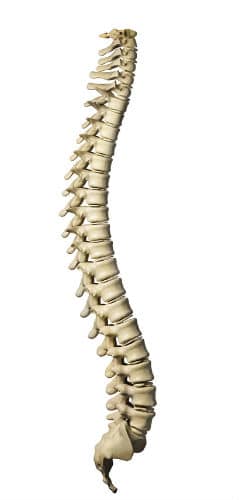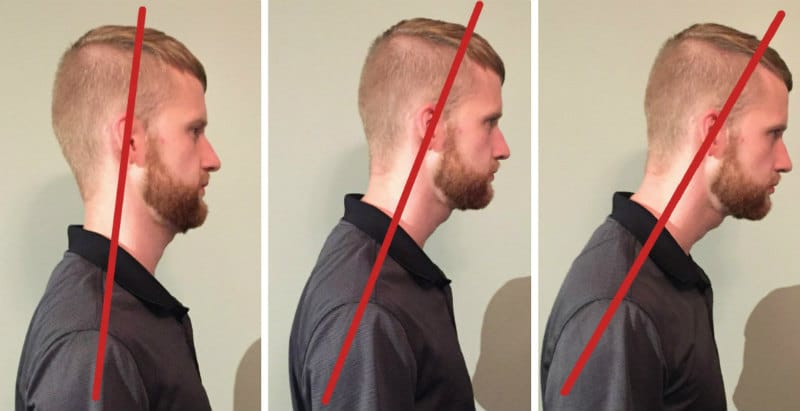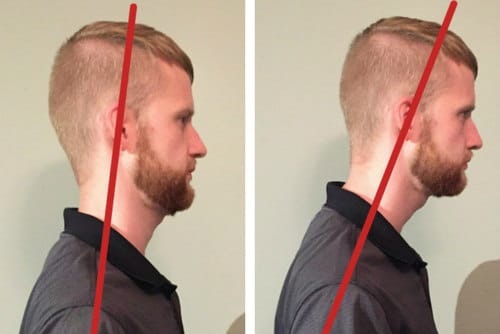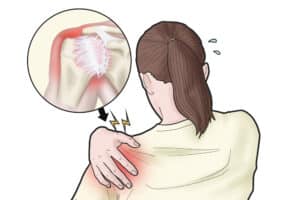Neutral Spine – What Is It?
Neutral spine can be defined as the position in which our spine maintains its natural curvature, and in which it is most biomechanically efficient. In other words, a neutral spine is one that is in ‘good posture.’ It is at its strongest and safest when in this position, and so is the most resistant to pain, fatigue and injury.
So, what is the natural curvature of the spine? The first thing that might come to mind when visualizing good, proper posture is someone who is standing or sitting perfectly tall and straight; their spine is as straight as a pencil. However, this lack of curvature is actually improper, and can lead to a variety of problems. A healthy, neutral spine is as follows:
- Slight anterior (forward) curve at the neck, or cervical region. This is referred to as cervical lordosis.
- Slight posterior (backward) curve at the upper and middle back, or thoracic region. This is called thoracic kyphosis.
- Slight anterior curve at the lower back, or lumbar region. This is known as lumbar lordosis.
- Slight posterior curve at the pelvis, or sacral region. This is referred to as sacral kyphosis.
The image below provides a visual representation of a spine with healthy, natural curvature. Starting from the top of the spine and moving downwards, you can see curves in the following order: cervical lordosis, thoracic kyphosis, lumbar lordosis, and sacral kyphosis.

Why Should I Keep My Spine Neutral?
As mentioned earlier, a neutral spine is best able to absorb the forces being placed upon it. It is most resistant to fatigue, and the muscles that attach to it and help stabilize it are not being stretched or shortened out of their optimal functional lengths. If we continuously function with a poorly aligned spine, many health problems can emerge.
An example of this can be found in individuals who have a forward head posture, which is as it sounds – the head is situated farther forward than it should be. To counterbalance the increased weight on the spine of a head that is in this anterior position, the muscles of the upper back are constantly being stretched and overworked, which can cause irritation in them. Furthermore, the actual vertebrae (segments that make up the spine) at the lower neck region become more vulnerable to several problems, such as degenerative disc disease.

The pictures above show the harsh angles of varying degrees of forward head posture. This is just one example, as problems can emerge throughout the body from poor posture, not just the neck region.
How Do I Maintain Spinal Neutrality?
The biggest part of maintaining a neutral spine is simply developing awareness and good habits. For example, choosing to text with your phone held in front of you, rather than constantly bending at the neck to stare down at the screen. Once you have found that position of proper posture (a mirror or another person can help), consciously remind yourself to get back into it when you feel yourself slipping into a less ideal alignment. Eventually it will become more of a habit, and you won’t have to think about it as frequently.
This is sometimes easier said than done, as our workplaces and daily activities might force us to get out of spinal neutrality. In these cases, it might require more than just a behavioural change. Let’s use the example of a desk job: you are forced to sit and look at a computer or paperwork for several hours each shift, and maybe your work area is not optimized for good spinal position. Perhaps your chair is not an ergonomic design, or your monitor and desk are too low. Whatever the issue, these can lead to health issues in the long run and should be addressed as soon as possible. In this situation, purchasing or asking your employer for a taller monitor, or a better chair and desk, could greatly assist your ability to maintain spinal neutrality and health. Or, switching to a standing desk could be another viable option.
The following image on the left shows poor desk posture, while the image on the right shows a more neutral seated posture.

Training a Neutral Spine
Another important component of spinal neutrality is training your body while it is in a proper position. Once you have an idea of where your spine feels neutral, perform some exercises from this position! It will help strengthen the muscles and good habits even further. It is best to avoid exercises that will repeatedly contort the spine and facilitate poor postural habits, such as sit-ups and crunches. Exercises like planks will work the same areas without leaving a neutral spinal position – so long as you maintain good form.
The following are some examples of exercises performed with and without a neutral spine to help you get the idea:
Push-up:
Non-neutral spine (left photo) and neutral spine (right photo)

Squat:
Non-neutral spine (left photo) and neutral spine (right photo)

On a final note, it should be made clear that sometimes we need to leave neutral spine, such as when we are performing a shoulder check while driving. We shouldn’t fear the idea of not being in neutral posture at every second of the day. Rather, we should develop good habits and strengthen our body within a neutral posture whenever possible, so that when we are forced to leave it during certain activities that demand it, our bodies are well prepared.
References
Poor Posture and Neck Pain – https://www.spine-health.com/conditions/neck-pain/how-poor-posture-causes-neck-pain








